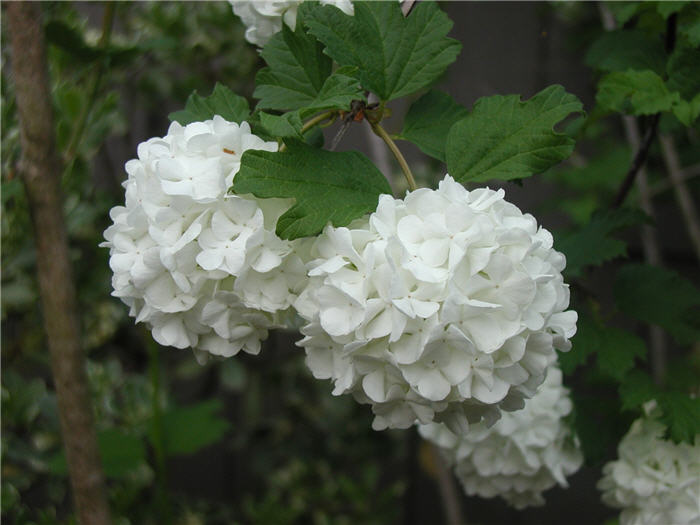| Botanical Name: Viburnum opulus 'Roseum' | |
| Common Name: Snowball Viburnum |

-
Anatomy
-
Culture
-
Design
Plant Type
Shrub
Height Range
6-12'
Flower Color
White
Flower Season
Spring
Leaf Color
Dark Green, Red
Bark Color
Brown, Grey
Fruit Color
n/a
Fruit Season
n/a
Sun
Full, Half
Water
Medium, High
Growth Rate
Moderate
Soil Type
Sandy, Clay, Loam, Rocky, Unparticular
Soil Condition
Average, Rich, Well-drained, Moist
Soil pH
Neutral
Adverse Factors
n/a
Design Styles
English Cottage, Formal
Accenting Features
Showy Flowers
Seasonal Interest
Spring
Location Uses
Background, Foundation, Walls / Fences
Special Uses
Cut Flowers, Screen
Attracts Wildlife
n/a
Information by: Stephanie Duer
Photographer:
Photographer:
-
Description
-
Notes
One of the old-fashioned "snowball bushes" that has been a garden favorite for centuries, this plant is best known for its large heads of sterile flowers that open green and mature to ivory white. These blooms may last for weeks, but they result in no fruit. It is a large-growing, rounded shrub that may reach 12 feet tall and wide. Leaves are bright green during the summer, and turn a purplish red in the fall
Grow in well drained soil, preferrably of a loamy nature, in full sun to partial shade. While adaptive to a variety of soil types, best growth occurs in fertile sandy-loam or clay-loam soils. Tolerant of alkaline soils. Occasional and selective pruning of oldest wood will keep the shrub compact, densely leafed, and tidy; shearing makes it very twiggy (see Guides). It may be attacked frequently by aphids that distort tender young growth; control with insecticidal soaps. Also listed as V.o. 'Sterile'.